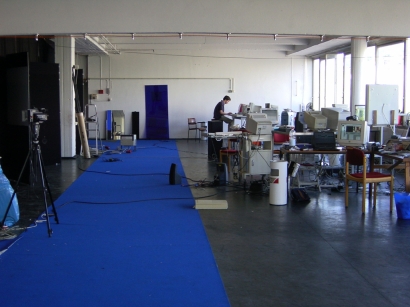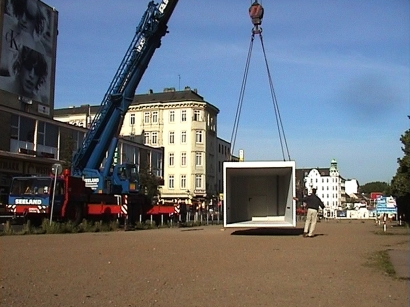Ein f18institut Projekt während der Baltic Biennale
Artgenda2002
in Hamburg
artgendaTV wurde als künstlerische Plattform für alle an der
Artgenda teilnehmenden Künstler konzipiert, wir entwickelten
2 Live- und Produktionsstudios sowie diverse Postproduktions
Einheiten, bauten ein Soundlabor, Werkstatt und Küche.
Für die 2wöchige Veranstaltung hatten wir eine Vorbereitungszeit
von ca. 6 Wochen vor Ort im Studio, inkl. Aufbau und organisation
des Teams. Das Team bestand aus circa 40 unbezahlten
Kooperanten und Mitarbeitern die zusätzlich auch ihre eigene
Ausrüstung miteinbrachten.
Nähere Informationen zum Projekt und Team auf artgendaTV
Initiatoren:
Stefan Doepner
Tinka Scharfe
Jan Cummerow
Philip Sollman
Gefördert vom Kultursenat der Stadt Hamburg










